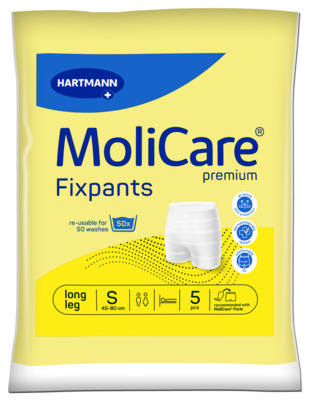Incontinence Advice
Incontinence during and after pregnancy
Pregnant women experience bladder weakness which is completely normal. As your uterus grows, the pressure on your urethra also increases. The result: urgency or an involuntary need to pee. According to WebMD, this problem typically starts in the second trimester and increases throughout the third trimester.
The good news? There are things you can do to help manage it during your pregnancy. You can use MoliCare shaped incontinence pads to help you manage any incontinence issues that may arise during your pregnancy.
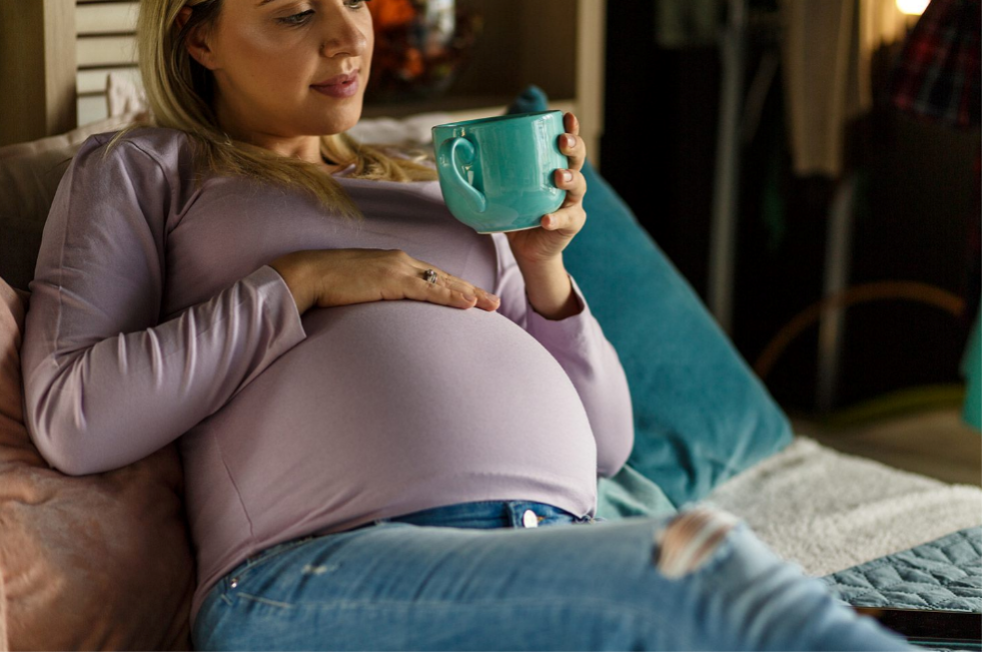
Common symptom: increased urge to urinate during pregnancy
In the course of a pregnancy, a woman's body thermally adapts to accommodate the growing baby. Many women are familiar with bladder weakness or a constant urge to go to the toilet during but also after pregnancy. An increased urge to the toilet is often one of the first signs of a pregnancy. In this article we explain to you why this develops and what you can do about it.Causes: why is my baby pressing on my bladder?
Let us look first at the pelvic floor muscles that support the organs in the lower abdomen. These ensure, together with other muscle bundles, that the bladder does not release urine, even when under stress.
To enable the child to grow and to prepare for birth, the pelvic floor muscles must now become considerably stretchier and softer. This is ensured in part by the increase in the hormone progesterone.2 These changes to the pelvic floor muscles make the birthing process easier but increase pressure on the bladder. It now has less support from the muscles in the pelvic floor and can no longer reliably withstand the pressure that develops with stresses such as coughing, sneezing, jumping or lifting heavy loads. The blood supply in the pelvic space of pregnant women also becomes much greater. This means that the kidneys produce more urine.
If and how severely a mother-to-be is affected by bladder weakness depends primarily on how strong her pelvic floor muscles are. The strength of these muscles declines with age and is also genetically predetermined to a certain degree. In general, physically active and slim women tend to have a stronger pelvic floor.
Symptoms of bladder weakness during pregnancy
The loss of urine during pregnancy is quite normal. Since there are many changes taking place in the female body, it is sensible to check with a doctor if it happens too often or for no apparent reason.
First three months of pregnancy, you can expect to have symptoms like frequent urination and pelvic pressure. In the second trimester, these symptoms will likely decrease as your uterus grows, creating more space in your abdomen, and as your hormones begin to stabilize..
However, in the last three months of pregnancy the baby’s head presses down directly onto the bladder and bladder weakness increases again. The muscles in the pelvic floor also relax more and more in preparation for the birth, symptoms of incontinence can easily be managed with ladies incontinence pads.
Incontinence shortly before the due date
As the due date approaches, it is important to be sure that any unwanted loss of fluid is not due to waters breaking early. In most cases the outflow of the amniotic fluid can be easily differentiated from urine, simply due to the sudden and surge-like flow, but a steady dribble of amniotic fluid is also possible. If you are not entirely sure, there are special test strips that stain purple with amniotic fluid and dark green with urine. If the waters breaking are associated with the first contractions, this is an unmistakeable sign that you will very soon be holding a new life in your hands.
Bladder weakness after the birth
Urinary incontinence does not immediately disappear after the birth. This primarily because the pelvic floor muscles are weakened, particularly after a vaginal birth, and need some time to recover. Even with a Caesarean section the muscles in the pelvic floor have been preparing for months for the birth and have become softer in the process. This means that after a birth, about one in four women are incontinent for at least some time. It's normal to have slight incontinence after giving birth. But it doesn't have to be embarrassing or take away from your everyday life. Postnatal exercises can help these women. Your midwife or your doctor will happily talk to you about these exercises. In the meantime, choose the comfortable incontinence product from MoliCare. Tailored to the specific needs of new mothers, our discreet lightweight pads and products are the perfect solution for slight incontinence. Our high-quality products take away the worry of leaks and accidents, leaving you free to live each day to the fullest.
For most women, however, the symptoms improve after the puerperium and only one in ten women have long-lasting or even permanent problems with urinary incontinence.
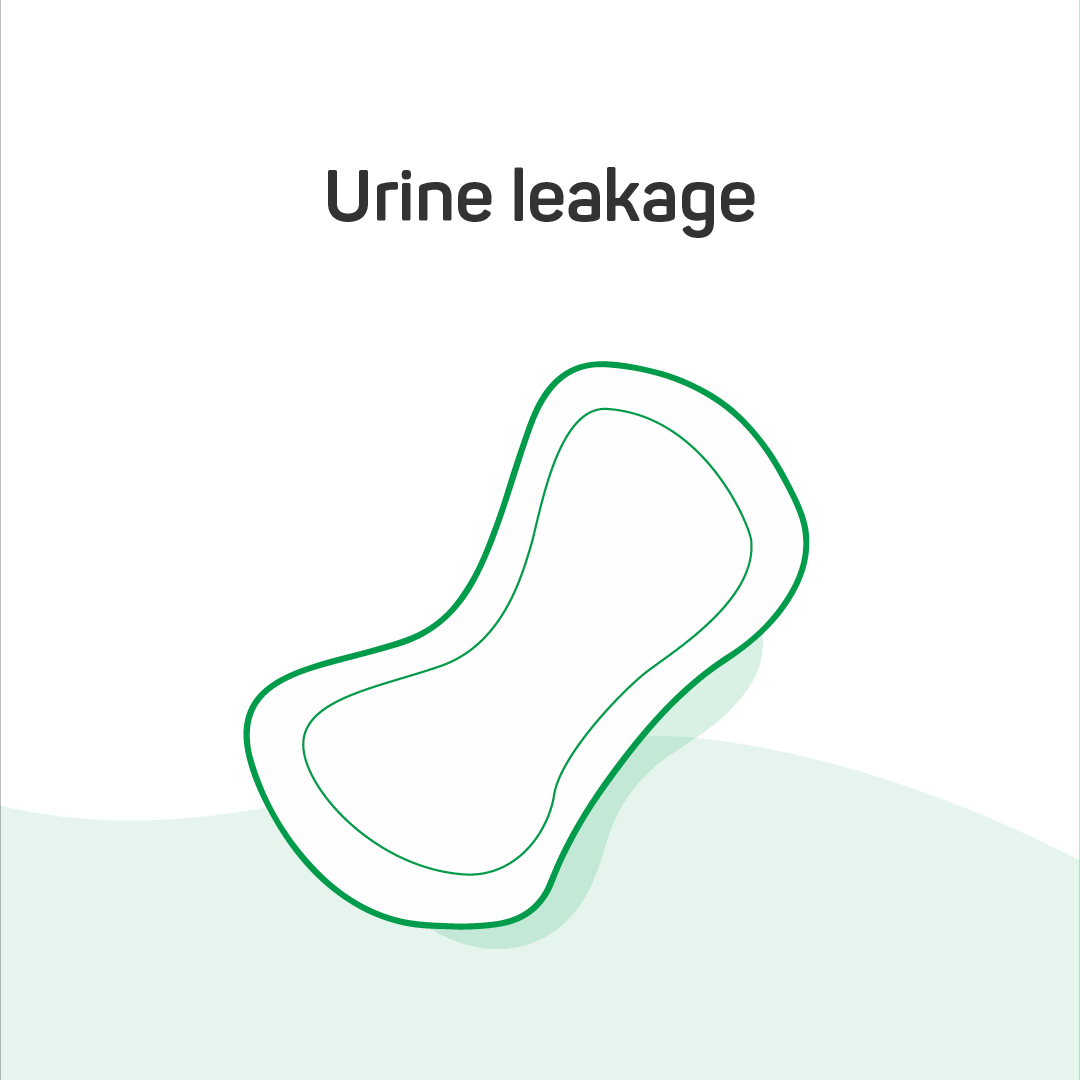
Uterine prolapse and incontinence
The uterus is held in position by a range of ligaments and muscles, including the pelvic floor muscles. If these muscles become weaker, for example, with age or after vaginal birth, the uterus can drop. This happens in about 30% - 50 % of women over the course of their lives.
Only in very extreme cases is this drop so severe that it is associated with symptoms and needs to be treated. For example, pain in the lower abdomen or back and a feeling of a foreign object in the vagina can indicate uterine prolapse.
A prolapsed uterus can also place more pressure on the bladder, which can lead to pain when going to the toilet, a weak urine stream and frequent urinating with a small volume of urine. Because the pelvic floor with its sphincter muscle system is weakened with uterine prolapse, this disorder is commonly associated with stress incontinence. Urine is typically lost with physical exertion such as jumping, sneezing or laughing. If the uterus slips downwards and backwards, this can lead to constipation, pain when defecating or even faecal incontinence. We wrote a post about urge incontinence. Click here to read more
Risk factors include:
- Hard physical work that stresses the pelvic floor.
- Medical conditions such as chronic bronchitis or constipation.
- Excess kilos on the scales because more weight places stress on the pelvic floor.
- A congenital or age-related connective tissue weakness.
- One or more births. Vaginal injuries and high birth weight for the baby increase the likelihood of uterine prolapse. However, a temporary uterine prolapse usually regresses soon after the birth.
If you suspect that your uterus may have prolapsed, contact your gynaecologist as soon as possible. Therapy differs depending on the severity of the symptoms and ranges from pelvic floor exercises to treatment with a hormonal cream during perimenopause to surgery.
Prevention and follow-up care with pelvic floor exercises
Fortunately, the pelvic floor muscles, like many other muscles in our bodies, have the big advantage that we can specifically train them and thus strengthen them. Regardless of which trimester of pregnancy you are in or even if you are still planning to become pregnant: it is never too early or too late for pelvic floor training. Ideally, start with a course run by a specialist who can take you through the exercises because it is not that easy to identify and then train the right muscles. In addition, biofeedback and electrostimulation can also provide support. Then continue your training at home.
You can find some simple exercises for a strong pelvic floor that you can easily integrate into your everyday life. Pilates and yoga are also known for their positive effect on the muscles in our pelvis. The best exercises are those that make you feel good and that you can do regularly. Read more about sport and incontinence in our new article. Click here
Sports like swimming or cycling also naturally strengthen the pelvic floor along with the back. Regardless of whether alone or together with friends or family, there are types of movement that feel good in any stage of pregnancy and strengthen your muscles.
More tips for dealing with urinary incontinence during pregnancy
- Diet: Avoid constipation by eating a balanced diet that is high in fibre. Bearing down too hard when going to the toilet can encourage incontinence.
- Use antenatal classes:: In these classes you learn how to strengthen the pelvic floor in day-to-day life instead of unnecessarily placing stress on it.
- Have sex: Even gentle sex can strengthen the pelvic floor.
- Drink plenty: Deliberately drinking little to reduce the urge to urinate often has a counterproductive effect because the more concentrated urine additionally irritates the bladder.
- Quit smoking: Because smokers cough more often and coughing places stress on the bladder, the increased risk of developing incontinence is another reason to give up smoking during and after pregnancy.
- Reliable aids for bladder weakness: Pregnancy is a special time when you should not have to worry about bladder weakness. Reach for the discreet MoliCare® Premium lady pads.
- If the bladder weakness does not improve after the birth, it is best to talk to your doctor to rule out other possible causes.
Summary: incontinence during pregnancy
We know that having a baby is a time of change; it is a time of growth and development. Becoming a mother is an exciting and rewarding transition in life. Unfortunately, new mothers also have to deal with a full range of common yet embarrassing symptoms. Experiencing bladder weakness while having a baby is not a reason to worry. The symptoms disappear in most cases in the first year after the birth and you can also take countermeasures from the very first weeks of pregnancy with regular pelvic floor training. To avoid embarrassing moments and to enjoy your pregnancy to its fullest, just reach for discreet pads for mild incontinence or disposable pants.Sources
- https://www.lifeline.de/leben-und-familie/schwangerschaft-und-geburt/erste-anzeichen-einer-schwangerschaft-id34555.html
- https://www.baby-und-familie.de/Schwangerschaft/Blasenschwaeche-So-beugen-Schwangere-vor-335625.html
- https://www.netdoktor.de/krankheiten/gebaermuttersenkung/
- https://www.muenchen-klinik.de/krankenhaus/neuperlach/frauenklinik-geburtsklinik/gynaekologie/gynaekologische-untersuchung-therapie/gebaermuttersenkung-scheidensenkung/
Kontinenz, Inkontinenz, Kontinenzförderung, Praxishandbuch für Pflegende, Hayder, Kuno, Müller, Huber Verlag, Seite 58
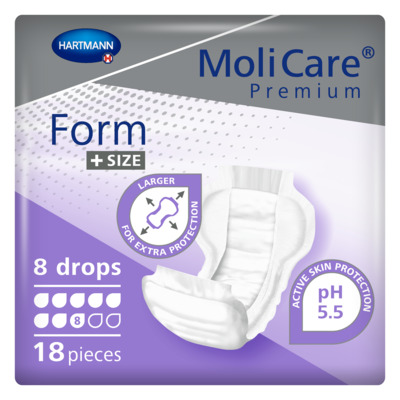
MoliCare Premium Form Bariatric
<h2>Optimum Wear Experience</h2> <p>Our selection of MoliCare® Premium Form + Size 8 drops provides the perfect solution as a high capacity pad to manage severe levels of incontinence in bariatric people in an easy and comfortable manner.</p> <p>Using this product alongside fixation pants allows for the skin to breathe and ensures optimum wearing comfort. These larger incontinence pads are ideal for those experiencing moderate to severe bladder or bowel weakness, catering to all wearers, whether active and independent or bedbound and dependent.</p> <h2>Body-shaped and disposable</h2> <p>Benefit from body-shaped, disposable incontinence pads designed to provide maximum leakage protection for both men and women. We recommend using these pads to deliver reliable and secure protection against leaks, keeping you confident and dry throughout the day. Maintain healthy skin with the skin-neutral value of pH 5.5 and an antibacterial finish. These pads are specially designed to let your skin breathe, ensuring comfort and well-being.</p> <p>Stay informed with the wetness indicator, showing when it is time to change the pad. The easy application and removal of this incontinence product are suitable for all wearers, whether standing or lying down.</p> <h2>Guaranteed Price Promise</h2> <p>With different absorbency levels available, MoliCare® incontinence products cater to all levels of incontinence, ensuring secure care and comfort.</p> <p>Embrace the convenience of MoliCare® Large Shaped Pads, providing you with the confidence to get on with your life without worries. Order online with our price match promise and discreet delivery, directly to your door, with free delivery on all orders over £40.</p> <p>For personalised information, our knowledgeable customer care team is ready to help. Call us today at 0800 028 9470 and experience the comfort and reliability of MoliCare® Premium Form + Size 8 Drops.</p>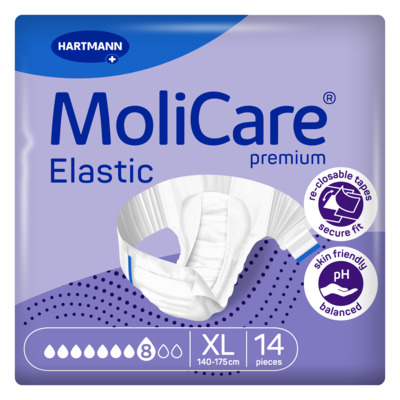
MoliCare® Premium Elastic 8 Drops
<p><strong>Convenient and Comfortable MoliCare® Premium Elastic 8 Drops</strong></p> <p>Some of the key benefits of investing in our products include:</p> <ul> <li>Suitable for men and women of all age groups.</li> <li>Skin-neutral pH value of 5.5 in all products.</li> <li>Premium elastic prevents leakages and odours.</li> <li>Easy to determine when a change is required.</li> </ul> <p><strong>Stress-Free Incontinence Experiences</strong></p> <p>When it comes to managing incontinence, there is a wide range of products available to cater to different levels of need. Among these options are incontinence slips, which consist of a large absorbent slip supported by an attached fixation system, commonly known as adult nappies.</p> <p><strong>Anti-Leakage Protection</strong></p> <p>Living with incontinence means wearing an appropriate product throughout the day, with occasional changes. That's why selecting the right solution that guarantees comfort, mobility, and easy changeability is crucial. The MoliCare® Premium Elastic 8 Drops is an all-in-one premium disposable adult diaper featuring two elasticated side panels and two re-closable hook and loop tapes on each side. This product caters to a wide spectrum of incontinence levels, ranging from moderate to severe bladder weakness and/or faecal incontinence. By wearing these incontinence slips, instead of regular underwear, people will experience a reassuring, comfortable fit, thanks to the elasticated side panels. Whether the wearer is active and independent or bedbound and dependent, they can enjoy full mobility and comfort. Water repellent, anti-leakage cuffs means that urine can’t escape from the sides urine is directed inwards to the absorbent core where it can be safely stored.</p> <p><a href="https://www.hartmanndirect.co.uk/incontinence-products">MoliCare® incontinence products</a> are available in different absorbency levels to cater for everyone with varying degrees of incontinence.</p> <p><strong>Choosing your Size</strong></p> <p>Measure waist at the largest width between the waist and hips. Select the product size based on the below sizing.</p> <p>Small: 28-35 inches (70-90cm)</p> <p>Medium: 33-47 inches (85-120cm)</p> <p>Large: 45-57 inches (115-145cm)</p> <p>Extra Large: 55-69 inches (140-175cm)</p> <p>HARTMANN Direct offers a fast, discreet delivery straight to your doorstep. Our products are developed with your convenience and comfort in mind, and we stand behind that quality with a price promise match. Additionally, orders exceeding £40 qualify for free delivery. If you require further assistance or guidance in selecting the right MoliCare® products, our friendly customer service team is just a phone call away.</p>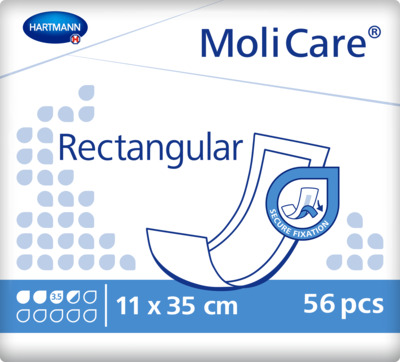
MoliCare Rectangular 3.5 Drops
<h2>Manage Incontinence</h2> <p>Choose MoliCare® for added protection based on your toiletry needs. Embrace the freedom and confidence that MoliCare® Rectangular Pads bring to your life. Managing incontinence has never been this comfortable and discreet for men and women.</p> <p>The MoliCare® Rectangular Pads are designed to handle slight incontinence levels. These slim and lightweight absorbent incontinence pads offer discreet protection that fits seamlessly in your underwear.</p> <p>Stay worry-free with their shape, which remains barely noticeable under your clothes. The waterproof backing provides added protection, while the core padding swiftly draws away any moisture, keeping you and your skin fresh and dry.</p> <p>Securely fix the Rectangular pad in your everyday underwear or use it with fixation pants for extra reassurance. Rest assured that these pads will protect you and your clothes from any leaks or spills.</p> <h2>Lightweight protection</h2> <p>Experience discreet and lightweight protection for light incontinence, tailored to fit your needs perfectly. Our online order service is quick and convenient, offering discreet delivery right to your door. Enjoy FREE delivery on all orders over £40, making your experience even more convenient and cost-effective.</p> <p>If you need assistance in choosing the best incontinence products for your needs, don't hesitate to reach out to our knowledgeable customer service team. We're here to help and provide you with the support and advice you need. Give us a call today at 0800 028 9470, and take the first step toward a more confident and comfortable life with MoliCare® Rectangular 3.5 drops.</p>